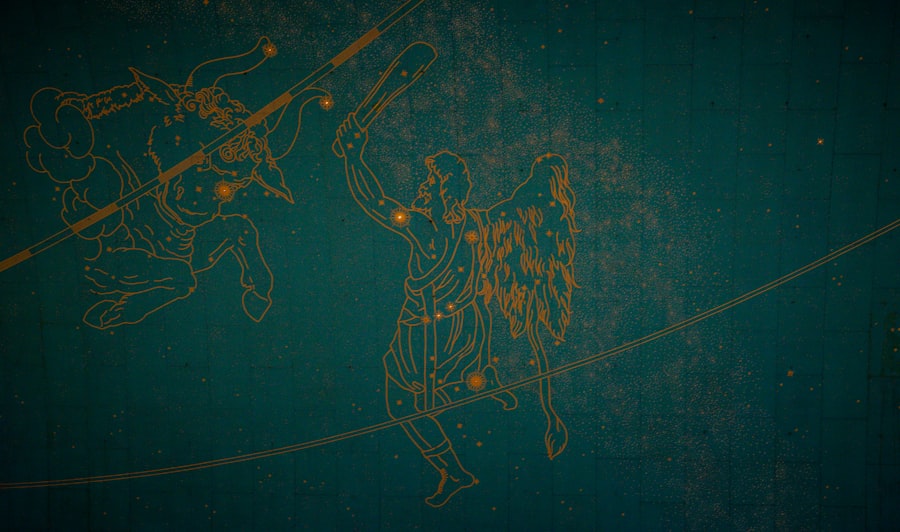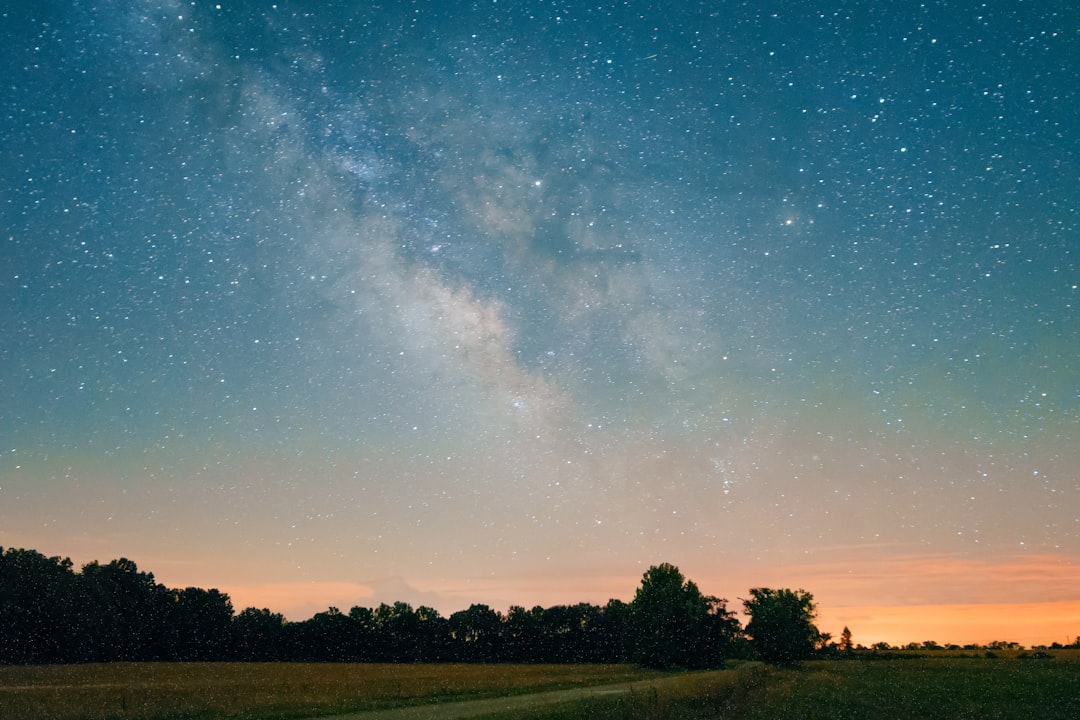The history of constellations is a rich tapestry woven through the ages, reflecting humanity’s quest to understand the cosmos. The earliest records of constellations date back to ancient civilizations, where the night sky served as both a canvas for storytelling and a practical tool for navigation. The Babylonians, around 2000 BCE, were among the first to systematically chart the stars, creating a catalog of constellations that would influence later cultures.
They identified groups of stars and assigned them names based on their observations of the natural world, such as animals and mythological figures. This early celestial mapping laid the groundwork for future astronomical studies and the development of star lore. As civilizations evolved, so too did their interpretations of the night sky.
The Greeks, particularly during the Hellenistic period, expanded upon Babylonian knowledge, introducing their own set of constellations. Figures like Ptolemy compiled star catalogs that included 48 constellations, many of which are still recognized today. The Greeks imbued these constellations with rich narratives, linking them to their pantheon of gods and heroes.
For instance, Orion, the Hunter, became a prominent figure in Greek mythology, symbolizing strength and bravery. This blending of astronomy and mythology not only served to explain celestial phenomena but also reinforced cultural values and beliefs.
Key Takeaways
- Constellations have been observed and recorded by various ancient civilizations, with the earliest known records dating back to Mesopotamia around 4000 BCE.
- The science behind constellations involves the study of stars, their positions, and their patterns in the night sky, which helps astronomers understand the universe and navigate in space.
- Some of the most famous constellations include Orion, Ursa Major, and Cassiopeia, which are easily recognizable and have been used for navigation and storytelling for centuries.
- Constellations hold cultural significance in various societies, with different cultures attributing different stories and meanings to the same group of stars.
- Many constellations have been incorporated into mythology, with ancient stories and legends often using the stars to explain natural phenomena and human experiences.
Understanding the Science Behind Constellations
While constellations are often perceived as mere patterns in the sky, they are fundamentally rooted in the science of astronomy. A constellation is defined as a group of stars that form a recognizable pattern when viewed from Earth.
The apparent proximity of stars in a constellation is a result of their alignment from our vantage point on Earth. This phenomenon is known as projection, where distant celestial bodies appear grouped together despite their actual distances. The study of constellations also involves understanding stellar classification and the life cycles of stars.
Stars within a constellation can vary significantly in size, brightness, and age. For example, in the constellation Ursa Major, which includes the well-known Big Dipper asterism, stars like Alioth and Mizar are part of different stellar classifications. Alioth is a bright A-type giant star, while Mizar is a binary star system that has been historically significant in navigation.
By studying these stars, astronomers can glean insights into stellar evolution and the dynamics of our galaxy.
Identifying the Most Famous Constellations

Among the myriad constellations that adorn our night sky, several have gained prominence due to their distinctive shapes and cultural significance. Orion is perhaps one of the most recognizable constellations, easily identifiable by its three-star belt. This constellation is visible across the globe during winter months and has been a source of fascination for countless cultures.
In addition to its mythological associations with hunting, Orion’s bright stars—Betelgeuse and Rigel—serve as important navigational markers for stargazers. Another notable constellation is Ursa Major, which contains the Big Dipper asterism. The Big Dipper is not only a familiar sight in North America but also serves as a guide to finding Polaris, the North Star.
This constellation has been utilized by various cultures for navigation and timekeeping throughout history. Its stars have been used in folklore and storytelling, with different interpretations across cultures; for instance, in some Native American traditions, the Big Dipper represents a bear being pursued by hunters.
Exploring the Cultural Significance of Constellations
| Constellation | Cultural Significance |
|---|---|
| Orion | Associated with a hunter in Greek mythology and has significance in various other cultures |
| Ursa Major | Known as the Great Bear and has significance in many cultures around the world |
| Leo | Represents a lion in Greek mythology and has significance in astrology and various cultures |
| Cassiopeia | Associated with a queen in Greek mythology and has significance in different cultures |
Constellations have played an integral role in shaping cultural identities and practices throughout history. Many ancient societies relied on celestial patterns for agricultural planning, using the positions of stars to determine planting and harvesting times. The Egyptians, for example, aligned their pyramids with specific stars in Orion’s belt, believing that these celestial bodies were gateways to the afterlife.
This connection between the heavens and earthly life underscores how deeply intertwined constellations are with human existence. In addition to practical applications, constellations have served as vessels for storytelling and cultural expression. Indigenous cultures around the world have their own unique interpretations of constellations, often embedding moral lessons or historical narratives within them.
The Aboriginal Australians have rich traditions surrounding the night sky, with constellations representing ancestral beings and significant events in their Dreamtime stories. These narratives not only preserve cultural heritage but also foster a sense of connection to the cosmos.
The Role of Constellations in Mythology
Mythology has long been intertwined with the study of constellations, providing a framework through which ancient peoples understood their world. Many constellations are named after figures from mythology, reflecting human traits or stories that resonate across cultures. For instance, the constellation Cassiopeia represents a queen from Greek mythology known for her beauty and vanity.
Her story serves as a cautionary tale about hubris and its consequences, illustrating how celestial patterns can encapsulate human experiences. In various mythologies around the globe, constellations often symbolize creation myths or significant events in cultural history. In Chinese astronomy, for example, certain constellations are associated with legendary figures such as the archer Hou Yi or the goddess Xi Wangmu.
These stories not only enrich our understanding of the constellations themselves but also highlight how different cultures interpret celestial phenomena through their unique lenses.
Modern Day Applications of Constellations

In contemporary society, constellations continue to hold relevance beyond their aesthetic appeal or mythological significance. They play a crucial role in navigation and astronomy education. Modern navigators still rely on constellations to orient themselves at sea or in remote areas where GPS signals may be unreliable.
The North Star (Polaris), located within Ursa Minor, remains an essential reference point for determining latitude in the Northern Hemisphere. Moreover, constellations serve as educational tools in astronomy classes worldwide. By teaching students to identify constellations, educators can foster an appreciation for science and encourage curiosity about the universe.
Planetariums often utilize constellations as entry points for discussions about stellar evolution, cosmology, and even astrobiology. This educational approach not only demystifies complex astronomical concepts but also inspires future generations to explore careers in science and technology.
How to Spot Constellations in the Night Sky
Spotting constellations can be an exhilarating experience that connects individuals with the vastness of space. To begin identifying constellations, one should first find a dark location away from city lights where light pollution does not obscure visibility. The best time to observe is during clear nights when atmospheric conditions are favorable.
Familiarizing oneself with seasonal changes in the night sky can also enhance this experience; different constellations become prominent at various times throughout the year. Using star charts or mobile applications designed for stargazing can significantly aid in identifying constellations.
For beginners, starting with well-known constellations like Orion or Ursa Major can build confidence before exploring more obscure patterns. Engaging in stargazing with friends or family can also enhance enjoyment and foster shared experiences under the night sky.
The Future of Constellation Exploration
As technology advances, so does our ability to explore and understand constellations and their significance within our universe. The advent of powerful telescopes and space observatories has revolutionized our view of distant stars and galaxies. Projects like the James Webb Space Telescope aim to delve deeper into cosmic phenomena, potentially uncovering new celestial bodies that could redefine existing constellations or lead to entirely new ones.
Furthermore, ongoing research into exoplanets—planets outside our solar system—has sparked interest in how these distant worlds might relate to known constellations. As astronomers discover more about these planets’ atmospheres and potential habitability, they may find connections between our own solar system’s formation and those represented by various constellations. This exploration not only expands our understanding of astronomy but also raises profound questions about life beyond Earth and our place within the cosmos.
In conclusion, constellations are far more than mere patterns in the night sky; they embody centuries of human history, scientific inquiry, cultural significance, and mythological storytelling. As we continue to explore these celestial formations through both traditional methods and modern technology, we deepen our connection to the universe while fostering curiosity about what lies beyond our planet’s atmosphere.
If you are interested in understanding logical appraisal, inconsistency, and reasoning, you may want to check out the article Understanding Logical Appraisal, Inconsistency, and Reasoning. This article delves into the intricacies of logical thinking and how inconsistencies can impact our reasoning processes. It provides valuable insights into how we can improve our logical appraisal skills.





















+ There are no comments
Add yours